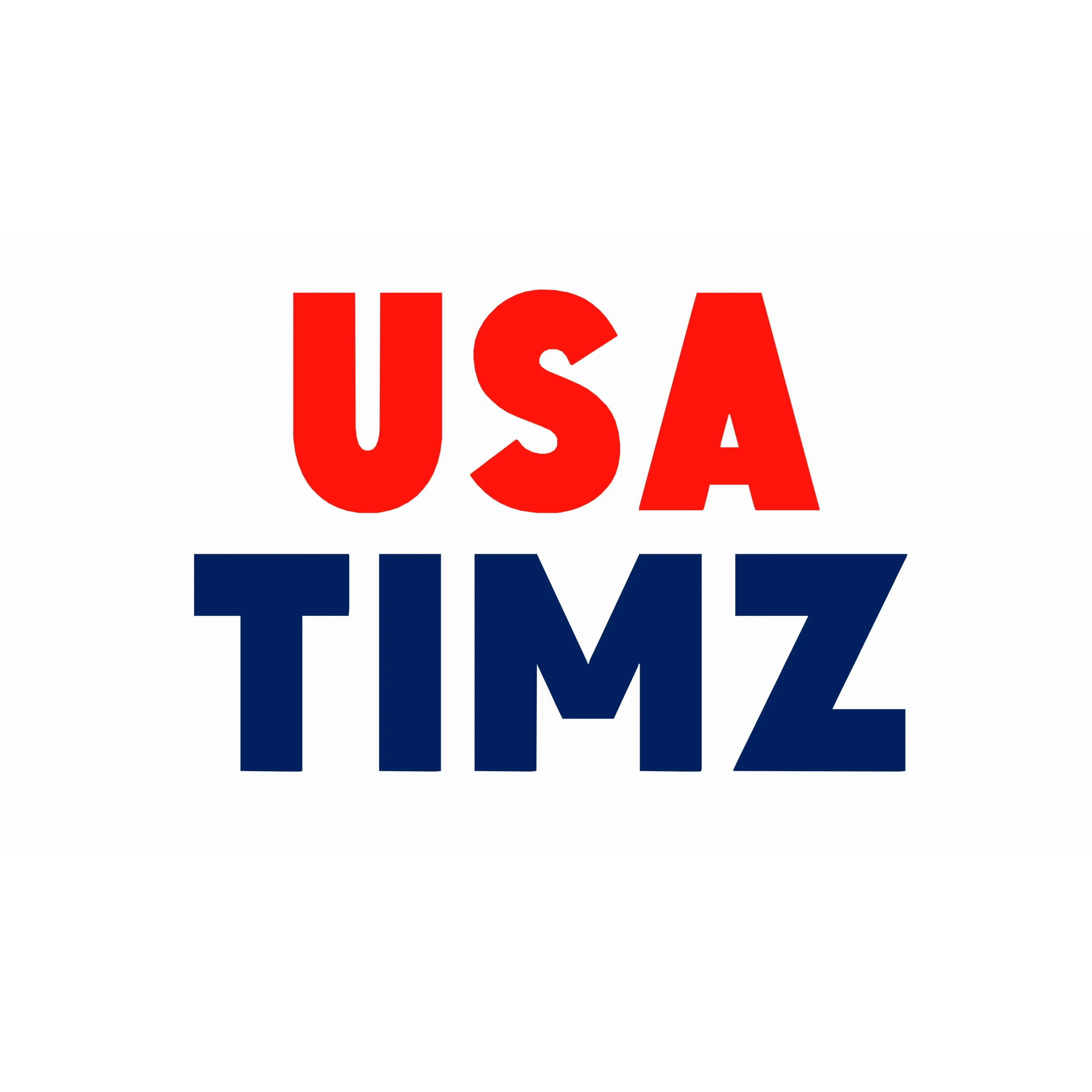India customers to view on amazon.in
Boost Your 401(k) Today with Top Tips for Maximum Retirement Savings
Planning for retirement can seem daunting, but with the right strategies, you can maximize your 401(k) contributions and secure a comfortable future.
- Understanding the 401(k) Basics: Your Foundation for Retirement Success
- What Is a 401(k) Plan and How Does It Work?
- Traditional vs. Roth 401(k): Understanding the Differences
- Key Benefits of Employer-Sponsored Retirement Plans
- The Power of Starting Early: Why Time Is Your Greatest Asset
- The Magic of Compound Interest in Retirement Savings
- How Starting Just 5 Years Earlier Can Dramatically Increase Your Nest Egg
- Setting Realistic Retirement Goals Based on Your Age
- Maximizing Employer Matching: Don’t Leave Free Money on the Table
- How Employer Matching Works
- Strategies to Ensure You Capture 100% of Available Matching Funds
- Calculating the True Value of Your Employer Match
- Contribution Strategies: Finding the Right Balance for Your Financial Situation
- Understanding Current 401(k) Contribution Limits for 2025
- Percentage vs. Fixed Amount Contributions: Which Works Better?
- Automatic Escalation: Painlessly Increasing Your Savings Rate
- Boost Your 401(k) Today with Top Tips for Maximum Retirement Savings
- Immediate Actions to Enhance Your 401(k) Performance
- Setting Up Regular Retirement Check-ins
- Leveraging Technology to Track and Optimize Your 401(k)
- Smart Investment Strategies Within Your 401(k)
- Understanding Your Investment Options
- Asset Allocation Based on Your Age and Risk Tolerance
- The Role of Target-Date Funds in Simplifying Your Investment Decisions
- Tax Optimization Techniques for Your 401(k)
- Tax Advantages of Traditional 401(k) Contributions
- Strategic Roth Conversions: When They Make Sense
- Tax-Efficient Withdrawal Planning for Retirement
- Age-Specific 401(k) Strategies: From 20s to 60s
- Early Career (20s-30s): Building Strong Foundations
- Mid-Career (40s-50s): Accelerating Your Savings
- Pre-Retirement (50s-60s): Catch-Up Contributions and Preparation
- Avoiding Common 401(k) Mistakes That Can Derail Your Retirement
- Early Withdrawals and Loans: The Hidden Costs
- Neglecting Rebalancing: Keeping Your Portfolio on Track
- Ignoring Fees: How Small Percentages Make Big Differences
- Integrating Your 401(k) into Your Broader Financial Plan
- Balancing 401(k) Savings with Other Financial Goals
- Coordinating with IRAs and Other Retirement Accounts
- Estate Planning Considerations for Your 401(k)
- Your Path to a Secure Retirement Through 401(k) Excellence
- FAQ
- What is a 401(k) plan and how does it work?
- What are the benefits of a traditional 401(k) versus a Roth 401(k)?
- How can I maximize my employer match in my 401(k)?
- What are the 401(k) contribution limits for 2025?
- How does compound interest work in a 401(k)?
- What are catch-up contributions, and who is eligible?
- How often should I review and adjust my 401(k) investments?
- Can I withdraw money from my 401(k) before retirement?
- How do I integrate my 401(k) into my overall financial plan?

Effective 401(k) investment strategies are crucial for growing your retirement savings. By making informed decisions, you can significantly enhance your nest egg.
Discover how to optimize your 401(k) plan with our expert retirement savings tips, ensuring you’re on track to meet your retirement goals.
Key Takeaways
- Understand the importance of maximizing your 401(k) contributions.
- Learn effective 401(k) investment strategies for growth.
- Get expert retirement savings tips to secure your future.
- Discover how to optimize your 401(k) plan for maximum benefits.
- Make informed decisions to enhance your retirement nest egg.
Understanding the 401(k) Basics: Your Foundation for Retirement Success
Building a secure retirement starts with understanding the basics of 401(k) plans. A 401(k) plan is a retirement savings plan sponsored by an employer that allows employees to save a portion of their income on a tax-deferred basis.
What Is a 401(k) Plan and How Does It Work?
A 401(k) plan works by allowing employees to contribute a portion of their salary to the plan on a pre-tax basis, reducing their taxable income for the year. Employers may also match a portion of the employee’s contributions, adding to the plan’s value over time.

Traditional vs. Roth 401(k): Understanding the Differences
The main difference between traditional and Roth 401(k) plans lies in their tax treatment. Traditional 401(k) contributions are made pre-tax, reducing your taxable income now, but withdrawals are taxed as ordinary income. Roth 401(k) contributions are made with after-tax dollars, so you’ve already paid income tax on the money, and withdrawals are tax-free.
| Feature | Traditional 401(k) | Roth 401(k) |
|---|---|---|
| Tax Treatment | Pre-tax contributions | After-tax contributions |
| Withdrawals | Taxed as ordinary income | Tax-free |
Key Benefits of Employer-Sponsored Retirement Plans
Employer-sponsored 401(k) plans offer several key benefits, including tax advantages, potential employer matching, and a structured way to save for retirement. By participating in a 401(k) plan, employees can take advantage of compound interest and potentially grow their retirement savings significantly over time.
The Power of Starting Early: Why Time Is Your Greatest Asset
Starting early is the key to unlocking the full potential of your 401(k) plan and securing a prosperous retirement. When you begin saving early, you give your money more time to grow, thanks to the power of compound interest.
The Magic of Compound Interest in Retirement Savings
Compound interest is a financial concept where the interest earned on your investments is reinvested, generating additional interest. This creates a snowball effect that can significantly boost your retirement savings over time. For instance, if you start saving $5,000 annually at age 25, by the time you retire at 65, you could have a substantial nest egg, assuming a reasonable rate of return.

How Starting Just 5 Years Earlier Can Dramatically Increase Your Nest Egg
Starting your 401(k) savings just 5 years earlier can have a dramatic impact on your retirement fund. To illustrate, consider the following:
- If you begin saving at 25, you’ll have more time for your money to grow compared to starting at 30.
- An additional 5 years of savings can add tens of thousands of dollars to your retirement account.
- The earlier you start, the less you’ll need to save each month to reach your retirement goals.
Setting Realistic Retirement Goals Based on Your Age
Setting realistic retirement goals is crucial, and your age plays a significant role in this process. Consider the following age-based milestones:
- By your 20s, you should start contributing to your 401(k), even if it’s a small amount.
- By your 30s and 40s, you should increase your contributions, taking full advantage of any employer match.
- As you approach retirement in your 50s and 60s, you should assess your savings and adjust your strategy as needed.
By understanding the power of starting early and setting realistic goals, you can maximize your 401(k) savings and enjoy a more secure retirement.
Maximizing Employer Matching: Don’t Leave Free Money on the Table
One of the most significant advantages of participating in a 401(k) plan is the employer match, which can substantially boost your retirement savings. Essentially, this means that for every dollar you contribute to your 401(k), your employer may contribute a certain amount, usually based on a percentage of your contribution.

How Employer Matching Works
Employer matching is not a one-size-fits-all benefit; it varies significantly from one company to another. Typically, employers match a percentage of your contributions up to a certain percentage of your salary. For instance, an employer might match 50% of your contributions up to 6% of your salary. This means if you contribute 6% or more of your salary to your 401(k), your employer will contribute 3% of your salary to your 401(k) account.
Strategies to Ensure You Capture 100% of Available Matching Funds
To maximize your employer match, it’s crucial to contribute enough to your 401(k) to capture the full match offered by your employer. Here are a few strategies:
- Contribute at least the maximum amount required to get the full employer match. If your employer matches up to 6% of your salary, ensure you’re contributing at least 6%.
- Review your employer’s matching formula to understand how it’s calculated. Some employers may have a tiered matching system.
- Adjust your contributions as needed, especially after pay raises or bonuses, to maintain or increase your contribution percentage.
Calculating the True Value of Your Employer Match
Understanding the true value of your employer match involves more than just looking at the amount contributed. It’s about recognizing the impact it has on your overall retirement savings. For example, if your employer matches 50% of your contributions up to 6% of your salary, and you contribute 6%, you’re essentially earning an immediate 50% return on that 6% contribution.
To calculate the true value, consider the employer’s contribution as a percentage of your salary and factor in the potential long-term growth of these contributions. This can significantly enhance your retirement savings over time.
Contribution Strategies: Finding the Right Balance for Your Financial Situation
Effective 401(k) contribution strategies can significantly boost your retirement savings. To maximize your benefits, it’s essential to understand the various options available and how they align with your financial situation.
Understanding Current 401(k) Contribution Limits for 2025
The IRS sets annual contribution limits for 401(k) plans. For 2025, the standard limit is $22,500, with an additional catch-up contribution of $7,500 for those aged 50 and above, making the total maximum contribution $30,000. Understanding these limits is crucial for planning your retirement savings effectively.
| Age Group | Standard Contribution Limit | Catch-Up Contribution | Total Maximum Contribution |
|---|---|---|---|
| Below 50 | $22,500 | $0 | $22,500 |
| 50 and Above | $22,500 | $7,500 | $30,000 |
Percentage vs. Fixed Amount Contributions: Which Works Better?
Deciding between percentage and fixed amount contributions depends on your financial stability and goals. Percentage contributions adjust with your salary changes, while fixed amount contributions provide consistency. It’s often beneficial to use a combination of both to balance flexibility and predictability.

Automatic Escalation: Painlessly Increasing Your Savings Rate
Automatic escalation is a feature that gradually increases your 401(k) contribution rate over time, typically aligned with salary increases. This strategy helps boost your retirement savings without impacting your take-home pay significantly. It’s an effective way to enhance your savings rate without feeling the pinch.
By understanding and leveraging these contribution strategies, you can optimize your 401(k) plan to better suit your financial situation and retirement goals.
Boost Your 401(k) Today with Top Tips for Maximum Retirement Savings
Maximizing your 401(k) is crucial for a secure retirement, and today we’ll explore top tips to boost your savings. A well-managed 401(k) plan can significantly impact your financial stability in the long run.
Immediate Actions to Enhance Your 401(k) Performance
To start, review your current 401(k) plan and assess its performance. Consider the following immediate actions:
- Increase your contribution rate, especially if your employer matches contributions.
- Rebalance your portfolio to ensure it remains aligned with your retirement goals.
- Explore other investment options within your plan to diversify your portfolio.
Setting Up Regular Retirement Check-ins
Regular check-ins are vital to track your progress and make necessary adjustments. Schedule quarterly reviews to:
- Assess your current savings rate and adjust as needed.
- Review your investment performance and rebalance your portfolio.
- Update your retirement goals based on any changes in your financial situation.
Leveraging Technology to Track and Optimize Your 401(k)
Utilize technology to streamline your 401(k) management. Consider using retirement planning apps or online tools that can help you track your progress and provide insights into optimizing your savings.
Here’s a comparison of popular retirement planning tools:
| Tool | Features | Cost |
|---|---|---|
| Personal Capital | Investment tracking, financial planning | Free |
| Mint | Budgeting, bill tracking, investment monitoring | Free |
| YNAB (You Need a Budget) | Budgeting, savings goals | $6.99/month |

By implementing these strategies, you can significantly boost your 401(k) savings and move closer to your retirement goals. Remember, consistent monitoring and adjustments are key to maximizing your retirement savings.
Smart Investment Strategies Within Your 401(k)
To maximize your retirement savings, it’s essential to employ smart investment strategies within your 401(k). A well-crafted investment plan can significantly impact your nest egg, helping you achieve your retirement goals.
Understanding Your Investment Options
Most 401(k) plans offer a variety of investment options, including stocks, bonds, mutual funds, and target-date funds. It’s crucial to understand the characteristics of each investment type to make informed decisions. For instance, stocks offer potential for high returns but come with higher risk, while bonds are generally more stable but with lower returns.
“Diversification is key to managing risk,” as noted by financial experts. By spreading your investments across different asset classes, you can mitigate potential losses and enhance potential gains.
Asset Allocation Based on Your Age and Risk Tolerance
Asset allocation is a critical component of your investment strategy. It involves dividing your investments among different asset categories based on your age, risk tolerance, and financial goals. A younger investor might allocate more to stocks for growth, while someone closer to retirement might shift towards more conservative investments like bonds.

The Role of Target-Date Funds in Simplifying Your Investment Decisions
Target-date funds (TDFs) are a popular choice for 401(k) investors due to their simplicity and diversified approach. TDFs automatically adjust their asset allocation based on a specific retirement date, becoming more conservative as you approach retirement.
Evaluating Fund Performance and Expense Ratios
When selecting funds for your 401(k), it’s vital to evaluate their performance and expense ratios. Look for funds with a consistent track record of performance and low expense ratios, as high fees can significantly erode your returns over time.
- Compare the historical performance of different funds.
- Check the expense ratios to ensure you’re not paying too much.
- Consider the fund’s investment strategy and how it aligns with your goals.
By carefully evaluating your investment options and employing a smart asset allocation strategy, you can maximize your 401(k)’s potential and move closer to achieving your retirement objectives.
Tax Optimization Techniques for Your 401(k)
Optimizing your 401(k) for tax efficiency can significantly impact your retirement savings. Understanding and leveraging tax optimization techniques can help you maximize your retirement funds.
Tax Advantages of Traditional 401(k) Contributions
Traditional 401(k) contributions offer immediate tax benefits by reducing your taxable income for the year you make the contributions. This can lead to significant tax savings, especially if you’re in a higher tax bracket. For instance, contributing $10,000 to a traditional 401(k) can lower your taxable income from $100,000 to $90,000, potentially saving you thousands in taxes.
Strategic Roth Conversions: When They Make Sense
Roth conversions involve converting a portion of your traditional 401(k) or IRA into a Roth IRA. This strategy can be beneficial if you expect to be in a higher tax bracket during retirement. By paying taxes now, you can enjoy tax-free withdrawals later. Consider the following benefits:
- Tax-free growth and withdrawals
- No required minimum distributions (RMDs) during your lifetime
- Flexibility in retirement planning
Tax-Efficient Withdrawal Planning for Retirement
Planning your withdrawals strategically can minimize taxes in retirement. Consider the following strategies:
- Withdraw from taxable accounts first
- Delay Social Security benefits to maximize your monthly payments
- Use tax-deferred accounts like traditional 401(k)s for later in retirement

By implementing these tax optimization techniques, you can enhance your 401(k)’s performance and secure a more financially stable retirement.
Age-Specific 401(k) Strategies: From 20s to 60s
Whether you’re just starting your career or nearing retirement, age-specific 401(k) strategies can make a significant difference in your retirement savings. As you progress through different decades of your life, your financial goals, income, and expenses change, necessitating adjustments in your retirement planning approach.
Early Career (20s-30s): Building Strong Foundations
In your 20s and 30s, establishing a solid foundation for your retirement savings is crucial. This is the time to take advantage of compound interest by starting to contribute to your 401(k) early. Even small, consistent contributions can grow significantly over time.
- Take full advantage of any employer match, as it’s essentially free money.
- Consider allocating a portion of your portfolio to higher-risk investments, as you have time to ride out market fluctuations.
- Automate your 401(k) contributions to ensure consistent savings.
Mid-Career (40s-50s): Accelerating Your Savings
By your 40s and 50s, you’re likely earning more and have a clearer picture of your retirement goals. This is a critical period to accelerate your savings.
“The biggest investment risk is not taking any risk… As the years go by, you’ll need to adjust your investment mix to balance risk and potential returns.”
— Investment Expert
Consider the following strategies:
- Increase your 401(k) contribution rate, especially if you’ve received a salary increase.
- Review and adjust your investment portfolio to ensure it remains aligned with your retirement goals and risk tolerance.
- Consider catch-up contributions if you’re 50 or older.
Pre-Retirement (50s-60s): Catch-Up Contributions and Preparation
As you approach retirement, it’s essential to fine-tune your 401(k) strategy to maximize your savings and prepare for withdrawals.
Special Considerations for Those Over 50
If you’re over 50, you can make catch-up contributions to your 401(k), significantly boosting your retirement savings. For 2025, the catch-up contribution limit is $7,500.
| Age Group | Strategy | Benefit |
|---|---|---|
| 20s-30s | Start early, automate contributions | Compound interest, consistent savings |
| 40s-50s | Increase contribution rate, review investments | Accelerated savings, aligned investment portfolio |
| 50s-60s | Catch-up contributions, prepare for withdrawals | Maximized savings, smooth transition to retirement |

By adopting age-specific 401(k) strategies, you can optimize your retirement savings and ensure a more secure financial future.
Avoiding Common 401(k) Mistakes That Can Derail Your Retirement
Maximizing your retirement savings requires more than just contributing to your 401(k); it demands a strategic approach to avoid common pitfalls. Many individuals unknowingly jeopardize their retirement funds through avoidable errors.
Early Withdrawals and Loans: The Hidden Costs
Withdrawing from your 401(k) before retirement can lead to significant penalties and tax implications. Similarly, taking a loan from your 401(k) can disrupt the compounding interest, potentially reducing your overall savings.
Neglecting Rebalancing: Keeping Your Portfolio on Track
Failing to rebalance your 401(k) portfolio can expose you to unnecessary risk. Regular rebalancing ensures that your investments remain aligned with your retirement goals.
Ignoring Fees: How Small Percentages Make Big Differences
Even small management fees can significantly erode your 401(k) savings over time. Understanding and minimizing these fees is crucial for maximizing your retirement funds.
| Common Mistake | Impact on Retirement Savings | Corrective Action |
|---|---|---|
| Early Withdrawals | Penalties and lost compounding interest | Avoid withdrawals before retirement age |
| Neglecting Rebalancing | Increased risk, potential for losses | Regularly review and rebalance your portfolio |
| Ignoring Fees | Reduced savings due to high fees | Choose low-cost investment options |
By being aware of these common 401(k) mistakes and taking proactive steps to avoid them, you can significantly enhance your retirement savings and ensure a more secure financial future.
Integrating Your 401(k) into Your Broader Financial Plan
As you navigate your financial journey, integrating your 401(k) into your overall financial plan is crucial for achieving a secure retirement. A comprehensive financial strategy involves balancing various elements, including retirement savings, other financial goals, and estate planning.
Balancing 401(k) Savings with Other Financial Goals
It’s essential to strike a balance between saving for retirement through your 401(k) and addressing other financial objectives, such as paying off debt, building an emergency fund, or saving for a down payment on a house. Allocate your resources effectively by prioritizing your goals and adjusting your 401(k) contributions accordingly.
Coordinating with IRAs and Other Retirement Accounts
Many individuals have multiple retirement accounts, including IRAs and other employer-sponsored plans. Coordinating these accounts with your 401(k) can help optimize your retirement savings. Consider the following table to understand how different accounts can work together:
| Account Type | Contribution Limits | Tax Benefits |
|---|---|---|
| 401(k) | $19,500 (2025) | Tax-deferred growth |
| Traditional IRA | $6,000 (2025) | Tax-deductible contributions |
| Roth IRA | $6,000 (2025) | Tax-free growth and withdrawals |
Estate Planning Considerations for Your 401(k)
Estate planning is a critical aspect of managing your 401(k). Designating beneficiaries and understanding the tax implications for your heirs can help ensure that your retirement savings are distributed according to your wishes. Consult with a financial advisor to integrate your 401(k) into your overall estate plan effectively.
Your Path to a Secure Retirement Through 401(k) Excellence
Achieving a secure retirement requires careful planning and effective management of your 401(k) plan. By understanding the basics of 401(k), maximizing employer matching, and implementing smart investment strategies, you can significantly enhance your retirement savings.
To ensure 401(k) excellence, it’s essential to start early, make informed investment decisions, and periodically review your retirement plan. By doing so, you’ll be better positioned to achieve your retirement goals and enjoy a secure retirement.
Effective retirement planning advice includes balancing your 401(k) savings with other financial goals and coordinating with IRAs and other retirement accounts. By integrating your 401(k) into your broader financial plan, you’ll be well on your way to achieving a secure retirement through 401(k) excellence.
By following the tips and strategies outlined in this article, you can take control of your retirement savings and create a more secure financial future.
FAQ
What is a 401(k) plan and how does it work?
A 401(k) plan is an employer-sponsored retirement savings plan that allows employees to contribute a portion of their salary to a tax-deferred investment account. The plan works by allowing employees to contribute pre-tax dollars, which are then invested in a variety of assets, such as stocks, bonds, and mutual funds.
What are the benefits of a traditional 401(k) versus a Roth 401(k)?
Traditional 401(k) contributions are tax-deductible, reducing your taxable income for the year, while Roth 401(k) contributions are made with after-tax dollars, so you’ve already paid income tax on the money. In retirement, traditional 401(k) withdrawals are taxed as ordinary income, whereas Roth 401(k) withdrawals are tax-free if certain conditions are met.
How can I maximize my employer match in my 401(k)?
To maximize your employer match, contribute enough to your 401(k) to take full advantage of the match offered by your employer. This is essentially free money that can significantly boost your retirement savings over time.
What are the 401(k) contribution limits for 2025?
The IRS sets annual contribution limits for 401(k) plans, and for 2025, the limits are subject to change. It’s essential to check the latest IRS guidelines or consult with your plan administrator to understand the current limits and how they apply to your situation.
How does compound interest work in a 401(k)?
Compound interest in a 401(k) works by earning interest on both the principal amount contributed and any accrued interest over time. This can lead to significant growth in your retirement savings, especially when you start saving early.
What are catch-up contributions, and who is eligible?
Catch-up contributions are additional amounts that individuals aged 50 or older can contribute to their 401(k) plans beyond the standard annual contribution limits. These contributions can help boost retirement savings for those nearing retirement age.
How often should I review and adjust my 401(k) investments?
It’s a good practice to review your 401(k) investments at least annually or whenever your personal financial situation or goals change. Rebalancing your portfolio as needed can help ensure it remains aligned with your retirement objectives.
Can I withdraw money from my 401(k) before retirement?
Yes, you can withdraw money from your 401(k) before retirement, but be aware that you may face penalties, such as a 10% penalty for withdrawals before age 59 1/2, unless you qualify for certain exceptions. It’s also important to consider the tax implications of early withdrawals.
How do I integrate my 401(k) into my overall financial plan?
Integrating your 401(k) into your broader financial plan involves considering your retirement goals, other savings and investments, and overall financial situation. Balancing your 401(k) contributions with other financial priorities, such as saving for a home or education expenses, is crucial.







